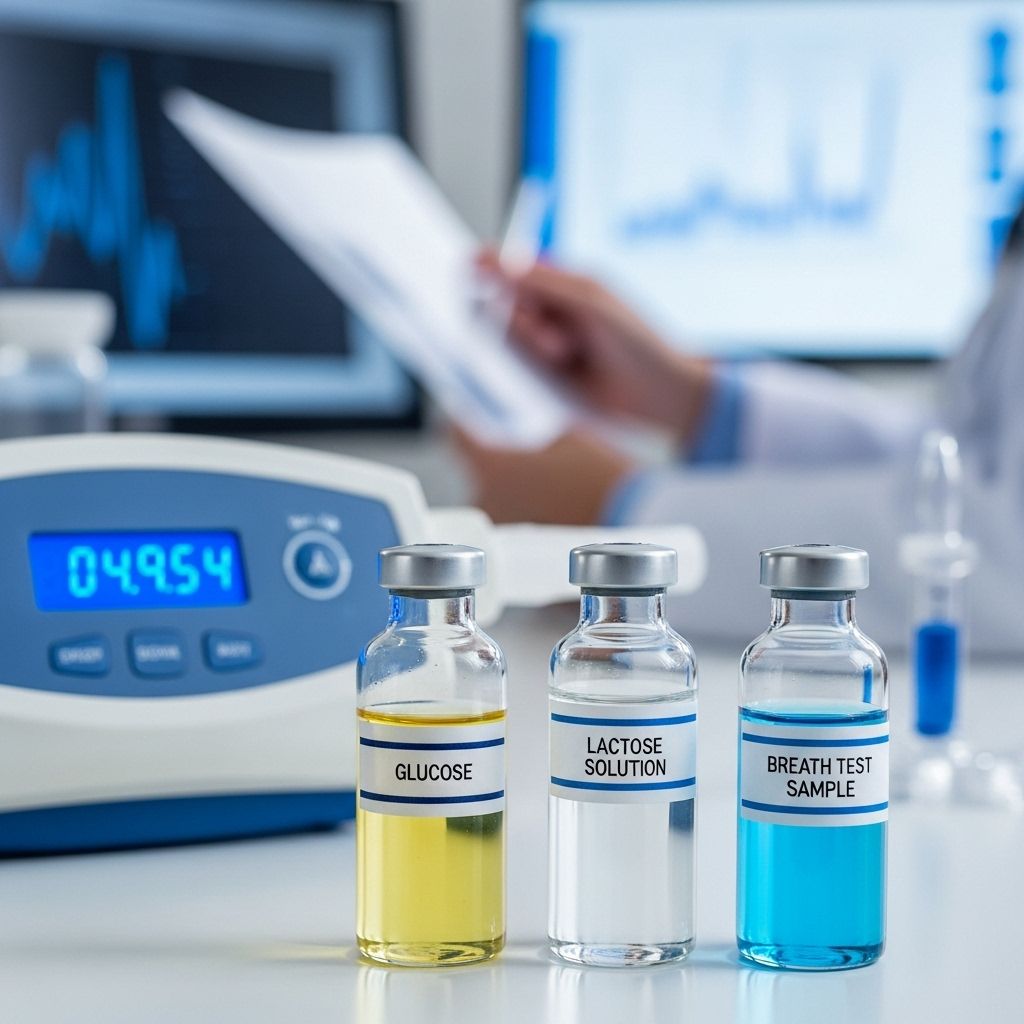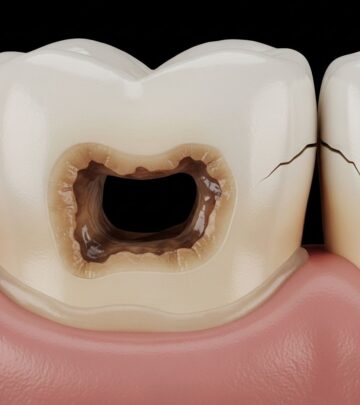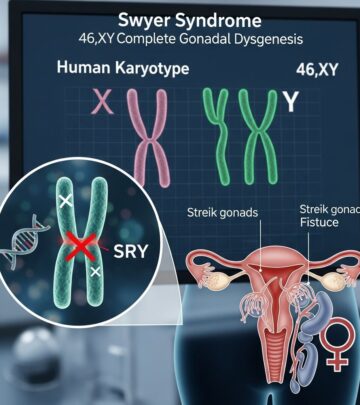Lactose Tolerance Tests: Understanding Diagnosis and Digestive Health
Learn how lactose tolerance tests diagnose lactose intolerance and guide dietary management for healthy digestion.

Lactose tolerance tests are critical diagnostic tools for determining whether your body can properly digest lactose, a sugar found in dairy products. These tests help identify lactose intolerance, a common digestive disorder marked by the inability to digest lactose due to insufficient levels of the lactase enzyme. Through precise measurements and analysis, lactose tolerance tests guide both diagnosis and treatment plans for those experiencing digestive symptoms after consuming dairy. This article delves into what lactose tolerance tests are, their purpose, types, the testing process, preparation steps, result interpretation, and frequently asked questions.
What Are Lactose Tolerance Tests?
Lactose tolerance tests evaluate your body’s capability to break down lactose, the primary sugar found in milk, cheese, ice cream, and other dairy products. Digestion of lactose requires the lactase enzyme, which splits lactose into the simpler sugars glucose and galactose, enabling absorption in the intestine.
- Lactose malabsorption: If your body lacks enough lactase, undigested lactose passes into the colon, causing uncomfortable symptoms such as bloating, gas, and diarrhea within 30 minutes to 2 hours after consuming dairy.
- Lactose intolerance: The term for experiencing symptoms after eating or drinking dairy due to poor lactose digestion.
There are two main lactose tolerance tests:
- Hydrogen breath test: Measures the amount of hydrogen gas in the breath after lactose consumption.
- Glucose blood test: Checks blood glucose levels before and after a lactose challenge.
Why Are Lactose Tolerance Tests Performed?
Lactose tolerance tests are used for the following purposes:
- To diagnose lactose intolerance in individuals who have digestive symptoms related to dairy products.
- To distinguish between lactose intolerance and other conditions with similar symptoms such as:
- Irritable bowel syndrome (IBS)
- Celiac disease
- Small intestinal bacterial overgrowth (SIBO)
- Crohn’s disease
- Ulcerative colitis
Proper diagnosis helps guide appropriate dietary and lifestyle recommendations.
Who Needs a Lactose Tolerance Test?
Your healthcare provider may recommend a lactose tolerance test if you experience symptoms typical of lactose intolerance, usually occurring 30 minutes to 2 hours after consuming dairy products. Common symptoms include:
- Abdominal pain or cramps
- Bloating
- Gas (flatulence)
- Diarrhea
- Nausea
Testing is recommended when these symptoms significantly impact daily life or when there is diagnostic uncertainty regarding the cause.
Types of Lactose Tolerance Tests
Hydrogen Breath Test
The hydrogen breath test is the most commonly used diagnostic procedure for lactose intolerance. The principle behind this test is that undigested lactose, upon reaching the large intestine, is fermented by bacteria, producing hydrogen gas. This gas is absorbed into the bloodstream and expelled in the breath.
- How it works: You will breathe into a balloon-like container to collect a baseline hydrogen measurement. You then drink a flavored liquid that contains a measured amount of lactose. At 30-minute intervals, typically over a span of two to three hours, you provide additional breath samples for analysis.
- Positive result: A significant increase in hydrogen detected in the breath following lactose consumption typically indicates lactose intolerance.
- Negative result: If hydrogen levels do not rise but symptoms are present, alternative diagnoses or factors (such as hydrogen non-producing bacteria) are considered.
Glucose Blood Test
The glucose blood test assesses lactose digestion by measuring blood glucose levels before and after a lactose challenge.
- Procedure: A health professional draws a blood sample to establish a baseline glucose level. You then consume a lactose-containing drink. Through subsequent blood draws at 30 minutes, 1 hour, and 2 hours after ingestion, glucose levels are tracked.
- Interpretation: If your body can digest lactose, glucose—and subsequently, blood sugar—levels rise after consumption. Failure of glucose to increase indicates likely lactose intolerance.
- Special considerations: Individuals with diabetes may have falsely elevated blood glucose levels independent of lactase activity, so test interpretation requires caution in these cases.
Test Preparation: How to Get Ready
Proper preparation enhances the accuracy of lactose tolerance tests. Follow your healthcare provider’s instructions strictly and consider the following steps:
- Fasting: Refrain from eating or drinking (except water) for several hours prior to the test, usually starting the night before.
- Medication restrictions: Avoid antibiotics, certain digestive aids (such as antacids, laxatives, and stool softeners), and rapid-acting medications for at least two weeks before the test, unless your healthcare provider advises otherwise. Some medications can interfere with test results.
- Avoid strenuous activity and smoking: Do not exercise or smoke several hours before the test as these actions may affect results.
- Oral hygiene: In some cases, you will be asked to thoroughly brush your teeth and rinse your mouth with water prior to the hydrogen breath test, both before and after drinking the lactose solution.
What to Expect During the Test
Hydrogen Breath Test Procedure
- You breathe into a container to establish your baseline hydrogen measurements.
- You will then drink a special liquid containing a defined dose of lactose.
- At 30-minute intervals, for up to three hours, you will provide additional breath samples by blowing into a series of containers or balloons.
- Your healthcare team will ask you about any symptoms experienced after each breath collection.
Glucose Blood Test Procedure
- A healthcare professional collects an initial blood sample from a vein in your arm.
- After drinking the lactose solution, follow-up blood samples are collected at specific time points—usually 30 minutes, one hour, and two hours after ingestion.
- You will be monitored for development of symptoms throughout the procedure.
Risks and Considerations
- Minimal risks: Lactose tolerance tests are generally safe with low risk. Minor discomfort may occur from blood draws (bruising, temporary pain).
- Potential symptoms: The test involves ingesting lactose, which can provoke symptoms in individuals with intolerance, such as abdominal cramping, bloating, gas, or diarrhea. Inform your provider if you feel seriously unwell during testing.
How Are Results Interpreted?
| Test Type | Result | What It Means |
|---|---|---|
| Hydrogen Breath Test | Significant hydrogen increase | Lactose is not digested, indicating lactose intolerance |
| Hydrogen Breath Test | No hydrogen increase | Unlikely lactose intolerance; symptoms may have another cause or you may be a hydrogen non-producer |
| Glucose Blood Test | No glucose elevation | Suggests lactose intolerance |
| Glucose Blood Test | Glucose levels rise | Likely not lactose intolerance; symptoms may be due to another problem |
- False negatives can occur, especially in individuals whose colonic bacteria do not produce hydrogen even when lactose is malabsorbed. An additional test involving lactulose (another sugar fermented by colonic bacteria) may help confirm the diagnosis.
- Diabetes may skew blood test results: Those with diabetes may experience increases in blood sugar regardless of lactase activity.
Limitations and Alternative Diagnoses
- Lactose intolerance is common, especially among certain ethnic groups and with increasing age.
- Other digestive disorders can mimic symptoms of lactose intolerance—proper testing ensures accurate diagnosis.
- Rarely, congenital lactase deficiency (a genetic disorder) may present in infants, prompting early testing.
After the Test: What Happens Next?
Your healthcare provider will review your test results and, if lactose intolerance is confirmed, discuss dietary adjustments. This may include:
- Reducing or avoiding lactose-containing foods
- Using lactose-free dairy products
- Taking lactase enzyme supplements
- Ensuring adequate intake of calcium and vitamin D from non-dairy sources
If test results are inconclusive or symptoms persist, further tests (such as those for celiac disease, IBS, or inflammatory bowel disease) or referrals to specialists may be warranted.
Frequently Asked Questions (FAQs)
What is lactose intolerance?
Lactose intolerance is the inability to digest lactose due to insufficient production of the lactase enzyme. This leads to gastrointestinal symptoms after consuming dairy products.
Are lactose tolerance tests safe?
Yes, both the hydrogen breath test and glucose blood test are safe. Temporary discomfort, such as bloating or diarrhea, may occur if you are lactose intolerant.
How should I prepare for the hydrogen breath test?
You’ll need to fast, sometimes overnight, and avoid certain medications (especially antibiotics and digestive aids) for up to two weeks before the test. Refrain from strenuous activity and smoking just before the test.
Can lactose tolerance tests distinguish between primary and secondary lactose intolerance?
No, these tests show whether you can digest lactose but do not distinguish between permanent (primary) and reversible (secondary to illness) lactase deficiency.
Is lactose intolerance reversible?
Secondary lactose intolerance, caused by temporary damage to the intestines (such as from infections or conditions like celiac disease), can be reversible. Primary lactose intolerance, due to genetic factors, is usually permanent.
Summary Table: Lactose Tolerance Test Comparison
| Test Type | Procedure | Main Advantage | Limitation |
|---|---|---|---|
| Hydrogen Breath Test | Breath samples after drinking lactose solution | Non-invasive, widely available | Not reliable for hydrogen non-producers |
| Glucose Blood Test | Blood samples at timed intervals after ingestion | Direct measurement of glucose absorption | Affected by diabetes and other glucose disorders |
Important Tips
- Always provide a thorough history to your healthcare provider before testing.
- If you are uncertain about instructions, seek clarification before your test appointment.
- Symptoms can vary in severity; even those with mild symptoms can benefit from testing to optimize diet and comfort.
- Keep a symptom diary before testing; it can help your provider interpret results accurately.
Additional FAQs
If I have a negative test result but still have symptoms, what should I do?
Your healthcare provider may conduct further tests to investigate other causes of your symptoms, such as other food intolerances, irritable bowel syndrome, or intestinal inflammation.
How common is lactose intolerance?
Lactose intolerance is very common, affecting millions worldwide and up to 30 million adults in the United States alone by age 20. Prevalence varies by ethnicity and age.
Can I self-diagnose and treat lactose intolerance without a test?
While some people choose to avoid dairy to see if symptoms improve, formal testing ensures correct diagnosis and helps prevent unnecessary dietary restrictions.
Are there alternatives to the hydrogen breath and glucose blood tests?
Yes, less commonly used options include stool acidity tests for infants. Genetic testing can identify variants in the LCT gene related to lactase production, but it is not routinely used.
Resources for Further Information
- National Institutes of Health (NIH): Information and resources on lactose intolerance and testing.
- Dietitians and nutritionists: Can offer dietary guidance for lactose intolerance management.
Read full bio of medha deb












